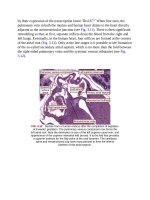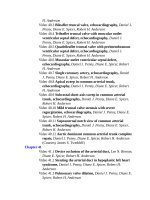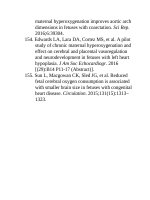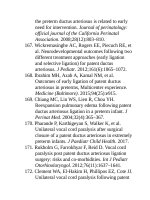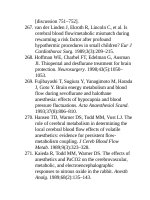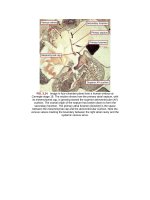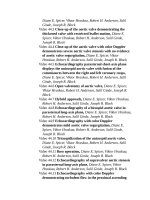Andersons pediatric cardiology 1093
Bạn đang xem bản rút gọn của tài liệu. Xem và tải ngay bản đầy đủ của tài liệu tại đây (60.86 KB, 3 trang )
biologiccontroloftheduct.
KrichenkoA,BensonLN,BurrowsP,etal.
Angiographicclassificationoftheisolated,
persistentlypatentductusarteriosusand
implicationsforpercutaneouscatheterocclusion.
AmJCardiol.1989;63:877–880.
Interestedinacategorizationschemeforductal
geometry,theseauthorsproposedaneasy
classificationthatallowsretrospectivedata
analysis.
SmallhornJF,HuhtaJC,AndersonRH,Macartney
FJ.Suprasternalcross-sectional
echocardiographyinassessmentofpatentductus
arteriosus.BrHeartJ.1982;48:321–330.
Thefirststudydefiningthetechniqueforimaging
theductbytwo-dimensionalechocardiography.
LloydTR,BeekmanRHIII.Clinicallysilentpatent
ductusarteriosus.AmHeartJ.1994;127:1664–
1665.
SalazarJ,OlivanP,IbarraF,etal.Silent
uncomplicatedpatentductusarteriosusin
children.Diagnosiswithecho-doppler.
[Spanish]ServiciodeEspanolaDeCardiologia.
1990;43:410–412.
HoustonAB,GnanapragasamJP,LimMK,Doig
WB,ColemanE.Dopplerultrasoundandthe
silentductusarteriosus.BrHeartJ.1991;65:97–
99.
BalzerDT,SprayTL,McMufflinD,Cottingham
W,CanterCE.Endarteritisassociatedwitha
clinicallysilentpatentductusarteriosus.Am
HeartJ.1993;125:1192–1193.
ParthenakisFI,KanakarakiMK,VardasPE.
Imagesincardioogy:silentpatentductus
arteriosusendarteritis.Heart.2000;84:619.
MalnickSD,ShimoniS,ZimhonyO.Anunusual
caseofendocarditis.CalMedAssocJ.
2006;174:1087–1088.
Thesearticlesestablishedtheexistenceofthesocalledsilent(nonhypertensive)duct,andthe
specterofitspotentialriskforendarteritis.
CampbellM.Naturalhistoryofpersistentductus
arteriosus.BrHeartJ.1968;30:4–13.
Campbellanalyzedfourseriesofpatientsinwhich
11examplesofspontaneousclosureoccurred
over1842patient-years,givingarateof0.6%
perannum.However,severaloftheexamples
werebasedonquitetenuousclinical
impressions.Innonewascatheterization
performedbeforeandaftertheevent.Thefigure
calculatedbyCampbellisalmostcertainlyan
overestimate.Hedidnotsuggestthatsurgery
shouldbedelayedexcept,perhaps,inpatients
withsmallshuntsandsignsthattheductwas
alreadyclosing.Fewcardiologistswouldnow
agreeevenwiththeseexceptions.
JacobsJP,GiroudJM,QuintessenzaJA,etal.The
modernapproachtopatentductusarteriosus
treatment:complementaryrolesofvideoassistedthoracoscopicsurgeryandinterventional
cardiologycoilocclusion.AnnThoracSurg.
2003;76:1421–1427.
Anexcellentreviewoftheapplicationof
thorascopicsurgeryandpercutaneouscoil
embolization.Bothtechniquesare
complementary,andarationaleforselectionof
theappropriatetreatmentmodalitycanbebased
onthesizeandageofthepatientandthesize
andmorphologyoftheduct.
PortsmannW,WiernyL,WarnkeH.Closureof
persistentductusarteriosuswithoutthoracotomy.
GerMedMonth.1967;12:259–261.
RashkindWJ,CuasoCC.Transcatheterclosureof
apatentductusarteriosus:successfuluseina
3.5-kginfant.PediatrCardiol.1979;1:3–7.
CambierPA,KirbyWC,WorthamDC,MooreJW.
Percutaneousclosureofthesmall(<2.5mm)
patentductusarteriosususingcoilembolization.
AmJCardiol.1992;69:815–816.
Thesethreereportsreportthefirstpercutaneous
techniquesforductalclosure.Althoughonlycoil
